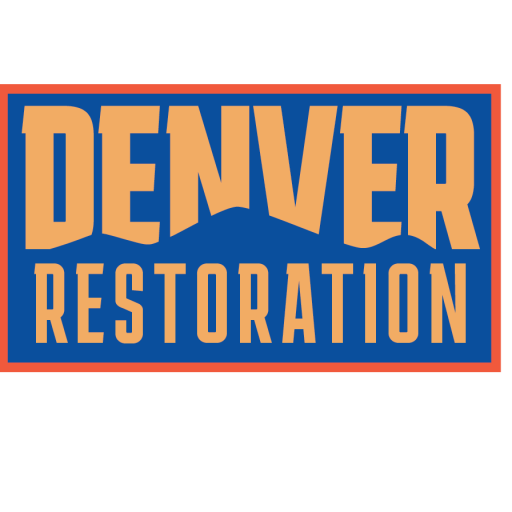Assessing the Extent of Smoke Damage
Smoke damage can be considerably harmful to the health of the occupants in a building, potentially causing respiratory problems, eye irritation, headaches, and, in severe cases, severe lung conditions. It is, therefore, imperative to promptly assess the extent of smoke damage to mitigate its impacts and enhance indoor air quality. Here are a few things to consider during the assessment process:
- The type of smoke residue left behind, which could vary from dry or wet smoke to protein or oil-residue based smoke.
- The nature and extent of physical damage, such as discoloration and etching on surfaces.
- The pervasiveness of the smoke odor in the building.
Smoke Damage Recovery: The Process
Recovering from smoke damage and restoring indoor air quality involves a meticulous process that often requires professional assistance. When performed correctly, this process can alleviate health risks and improve air quality. Let’s delve into the details of this process.
Cleaning and Deodorization
Proper cleaning of the surfaces affected by smoke damage is a critical step to restoring indoor air quality. The process involves thorough cleaning of walls, ceilings, and other surfaces to get rid of soot and smoke residues. Following this, professional restoration services use specialized deodorizing techniques to neutralize the lingering smoke smell.
Air Purification
This step plays a vital role in smoke damage recovery. Air purification devices can help to improve the indoor air quality by removing fine particulates and gaseous pollutants. Here, the use of hydroxyl generators is found to be effective. These devices release hydroxyl radicals that react with and neutralize various pollutants, including smoke particles, thus significantly improving air quality.
Regular Ventilation
Adequate ventilation is an effective way to improve air quality after a smoke damage incident. Regularly opening windows and doors allows fresh air in, helping to dilute the concentration of smoke particles and improve air quality.
Regular HVAC Cleaning
Your Heating, Ventilation, and Air Conditioning (HVAC) system can harbor smoke particles, recirculating them around your property and impacting indoor air quality. Hence, the cleaning and maintenance of your HVAC system is a crucial part of smoke damage recovery.
Mitigating Health Hazards
By prioritizing smoke damage recovery and air purification, you protect the health of your building’s occupants. Chronic exposure to degraded air quality can lead to health issues like allergies, asthma, and other respiratory conditions. Therefore, taking immediate action to mitigate smoke damage is instrumental in ensuring the wellness of everyone within the building.
Why Professional Help Matters
Performing smoke damage recovery on your own can be highly demanding and may not guarantee satisfactory results. This is where professional restoration services come into play, providing expert solutions to improve air quality and return your property to its normal state.
Besides the technical expertise, professional companies can also assist with insurance and legal compliance, ensuring that the restoration process is smooth and lawful. The professionals also understand the importance of communication at every stage of the process, ensuring you are well-informed and satisfied with the restoration techniques and equipment used to improve air quality.
Remember, restoring your property after smoke damage is not just about cleaning up; it’s about ensuring the health and safety of its occupants. With expert assistance, you can embark on a successful recovery process, regain the vibrancy of your property, and most importantly, enhance indoor air quality for a healthier living environment.
Understanding Smoke Residue: The Key to Effective Restoration
A fundamental aspect of restoring a smoke-damaged property lies in understanding the type of smoke residue left behind. As mentioned earlier, these can vary greatly, from dry or wet smoke residues to protein or oil-based residues – each with unique challenges and solutions.
Dry smoke residues are often easier to clean due to their fine, powdery nature, but can penetrate far into your property’s porous materials, making them a challenge to entirely remove. On the other hand, wet smoke residues are stickier and smeary, making them more challenging to clean, but tend to stay on the surface of materials, simplifying their complete removal.
Protein or oil-based smoke residues are usually a result of kitchen fires and are particularly challenging due to their invisible nature and pungent odor. These residues can etch into surfaces if not promptly and correctly addressed, complicating the restoration process.
Understanding these nuances is essential for effective and efficient restoration, a task best left in the hands of professional damage restoration services.
Deploying the Right Restoration Techniques and Equipment
Successful restoration from smoke damage requires a combination of the right techniques and specialized equipment. For example, ozone generators have long been acclaimed for their ability to neutralize smoke odours by chemically reacting with the smoke particles and neutralizing them. However, owing to the potential health hazards associated with their use, experts have now turned towards safer alternatives such as hydroxyl generators. These devices work in similar ways as ozone generators, by releasing hydroxyl radicals into the air that react with and neutralize a variety of pollutants, including smoke particles. This results in significantly improved air quality, but without the associated health risks posed by ozone generators.
If you are interested in learning more about the differences between ozone and hydroxyl generators, you can refer to this Environmental Protection Agency guide.
However, it’s not just about having the right equipment; using them correctly is equally important. For instance, when it comes to air purification, it is essential to use air purifiers with a True HEPA filter and not just a “HEPA-type” filter. A True HEPA filter can remove up to 99.97% of particles that are 0.3 microns or larger in size, thus significantly improving indoor air quality.
Smoke damage restoration is a highly technical process that must tread a fine line between effectiveness and safety. It is crucial to adhere to environmental and health safety regulations when restoring a property affected by smoke damage, to not only ensure the safety of the building’s occupants but also to avoid potential legal implications. For example, the use of ozone generators, although effective, can pose significant health risks and their use must be strictly controlled to comply with safety standards.
Engaging with Insurance and Legal Compliance
Navigating insurance claims can be a daunting process, especially in the aftermath of a stressful event like a fire. One of the key benefits of engaging professional restoration services is their experience in dealing with insurance companies and understanding the legalities associated with smoke damage restoration.
They can assist with documenting the damage, estimating the restoration costs, filing insurance claims, and ensuring all restoration work is conducted in compliance with applicable laws and regulations. This not only takes the burden off your shoulders but can also speed up the restoration process, helping you get back to normal as soon as possible. For more insights into such matters, you may want to check out this helpful guide on insurance and legal compliance.
Facing the Aftermath: Crisis Management and Communication
In the aftermath of a fire incident, clear and prompt communication is crucial. If you’re a property manager or business owner, you have a responsibility to keep stakeholders informed about the situation and the steps being taken to address it.
Professional restoration services should be able to provide timely updates and clear explanations of what is happening at every stage of the process. This can help to manage expectations, alleviate concerns, and ensure everyone is on the same page.
Moreover, professional restoration services are also experienced in dealing with the emotional upheaval that often accompanies such incidents. They can provide much-needed support and guidance, helping you navigate this challenging time with dignity and composure.
Moving Forward: Creating a Resilient Environment
Restoring your property after smoke damage is not a one-time deal; it’s about creating an environment that is resilient to future incidents. This involves regular maintenance of your property, including frequent inspections and cleanings of your HVAC system, regular testing of your fire alarm systems, and ensuring all safety equipment is in good working order.
Remember, a fire incident can be a traumatic experience, but with the right help and support, you can navigate your way through it and come out stronger on the other side. By engaging professional restoration services, you not only restore your property to its former glory, but also ensure a safer, healthier environment for all occupants.
{Let’s continue to explore how you can better prepare your property against future fire incidents and enhance its safety measures in the coming section…}

